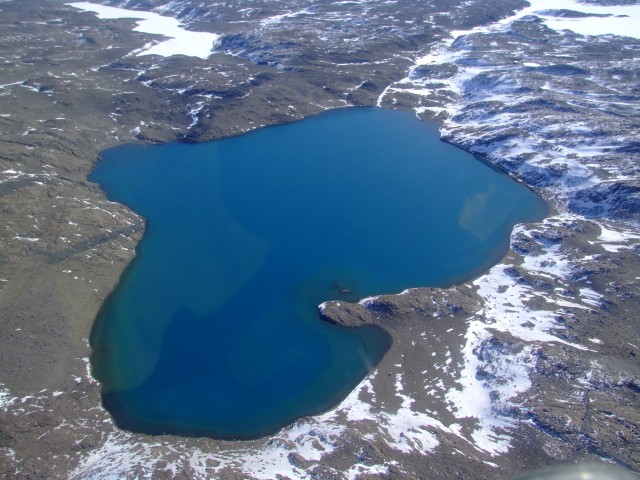In a frigid, salty lake, microbes swap genes at an unprecedented rate.
Despite temperatures well below freezing, Antarctic's Deep Lake remains unfrozen thanks to its extremely high salt content. The lake was isolated from the oceans about 3,500 years ago, when the continent lifted up around it. As inhospitable territory goes, this is pretty high on the list, a lake both colder and more saline than most living things can survive.
The extremophiles that inhabit these waters belong to a group called haloarchaea, microbes that actually require high salt concentrations. A team of Australian and American scientists who set out to study the genetic diversity of the lake's microbes discovered that the haloarchaea have responded to their extreme environment with extremely high rates of genetic exchange with other species, even other genera. The microbes use horizontal gene transfer—passing sections of genetic code to one another—to rapidly adopt any changes that help them adapt to this harsh environment.

They found four distinct genera had adapted to life in the lake in different ways. Despite their overall genetic differences, these regions had been sharing a lot of DNA. Long regions appear to be swapped whole, a phenomenon never before observed in a natural environment, scientist Rick Cavicchioli, a professor at the University of New South Wales, said.
What surprised Cavicchioli and his colleagues was that despite this high rate of gene sharing, the lake maintained distinct species instead of evolving into one homogenous ecosystem with a single dominant species. Ecologically, the species had developed different niches, using different food sources and different parts of the lake habitat.
READ MORE: Shutdown of US government websites appears bafflingly arbitrary
The lake is so cold that it's the most unproductive lake in the world—very little energy is available for the haloarchaea, so they metabolize and reproduce very slowly compared to their relatives in other environments. One of the Deep Lake species produces about six generations a year. That's about 100-fold less than haloarchaea species observed in acidic environments created by mine drainage, for example.
The high level of gene sharing might be an adaptation to maintain diversity under slow reproductive conditions (though all haloarchaea swap DNA to some degree). "This is the only cold hypersaline system that has been studied, so we don’t know about others," Cavicchioli said in an e-mail. "On my coming expedition (leaving in a few weeks) we will take samples from other lakes that might have similar communities."
READ MORE: AOL’s Sullivan to Take Over Its Homepage Business
Understanding how haloarchaea are able to survive and thrive under the extreme salt and cold could have practical applications, Cacicchoil said. Their enzymes could conceivably be put to work cleaning up hazardous waste at sites in cold climate or put to use in temperature-sensitive industrial processes.
Courtesy: arstechnica



0 comments:
Post a Comment